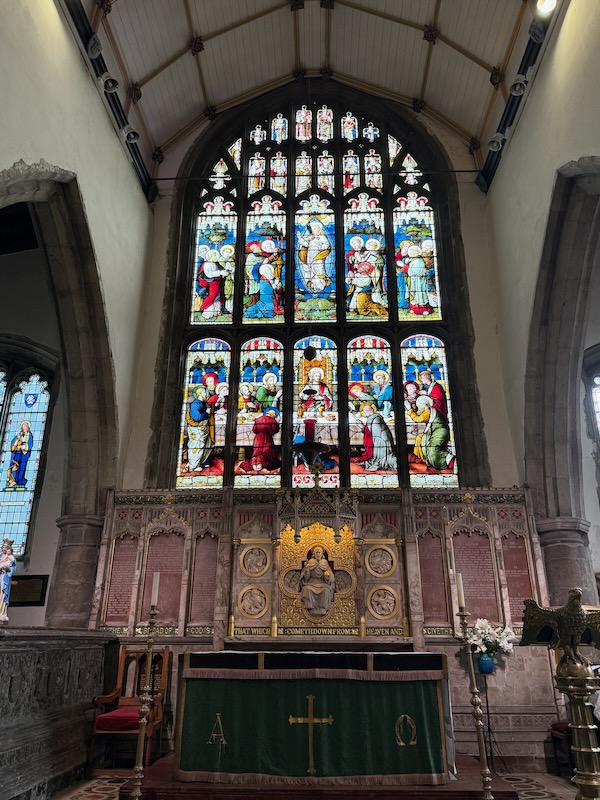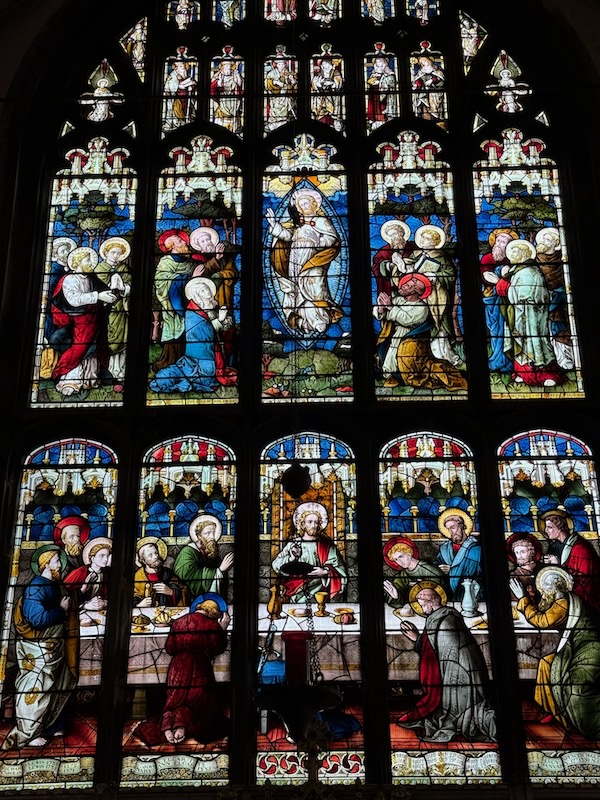Our Blog - August 2025 - England trip - Ashford
We stopped by the town of Ashford although we didn't spend very much time there. The town was first recorded in the Domesday Book in 1086 as having a church, two mills and 21 ‘households’, fairly large by medieval standards. In 1243, the town was given a charter as a "market town" and by 1600, it was one of the most important market towns in Kent.
There are a few really nice old buildings, some dating back to the 14th century.
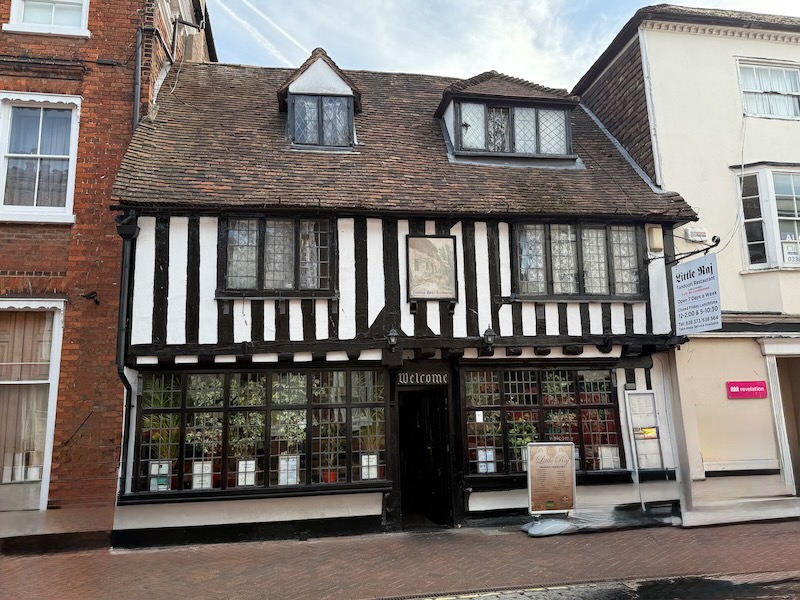
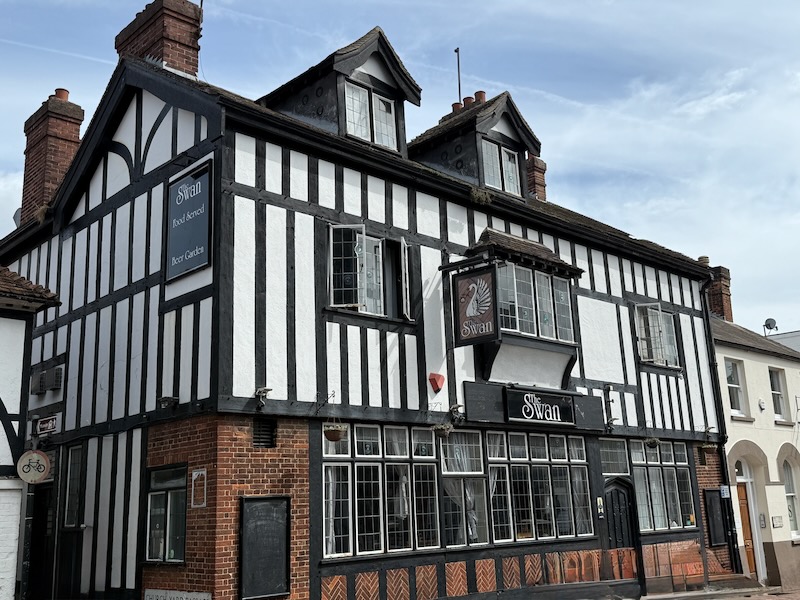
On Castle Street lies the most distinctive landmark, a WWI Mark IV Tank. It was presented to the town in 1919 as a thanks for residents enthusiastic response to the National War Savings scheme. An interesting point of trivia, supposedly the project to create a tank used the code name "Tank" was used to disguise these new armored vehicles as water tanks (at least, that is what the information here said). The Mark IV was the most popular at the time with 1,220 of them built, including 420 "males" and 595 "females", and 205 "tank tenders" that were unarmed and designed to carry supplies). The main difference between male and female models were the armament, with the male having bigger guns than the female. This is a "female", weighing in at around 16 tons and with a speed of only 4 mph. Her engine was removed and it was turned into an electricity substation until that was removed in 1972. Supposedly this is now the only one on public display in the entire country.
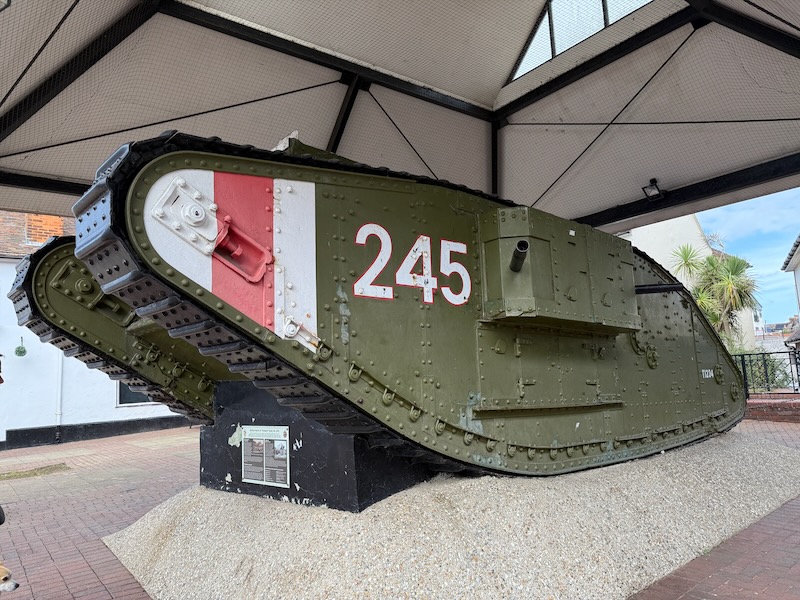
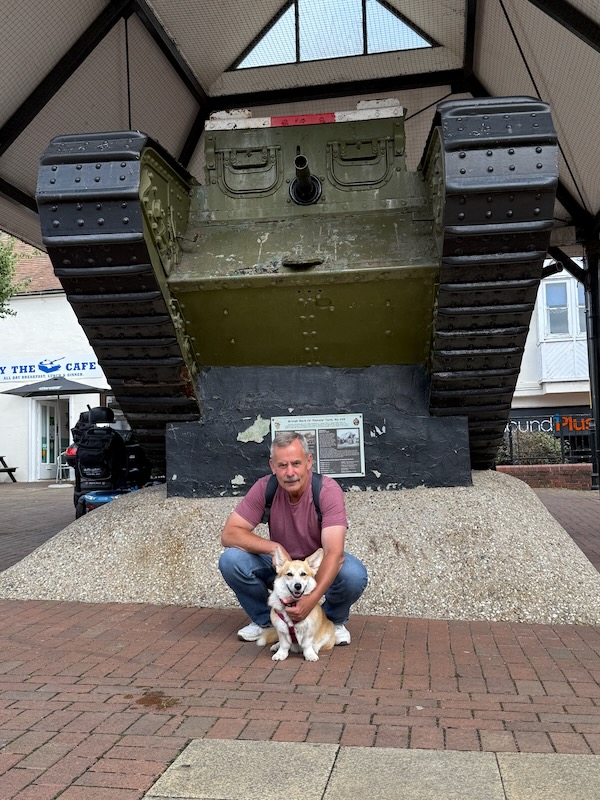
Right in the middle of the main shopping street is the town bandstand, which features motifs of Ashford’s heritage across its design. Here you can see the one of these, the shape of the tank we just saw.
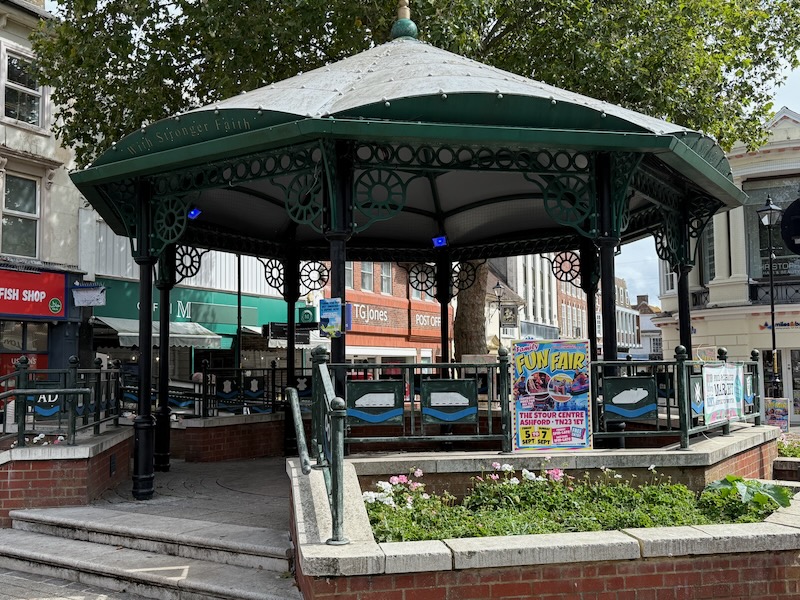
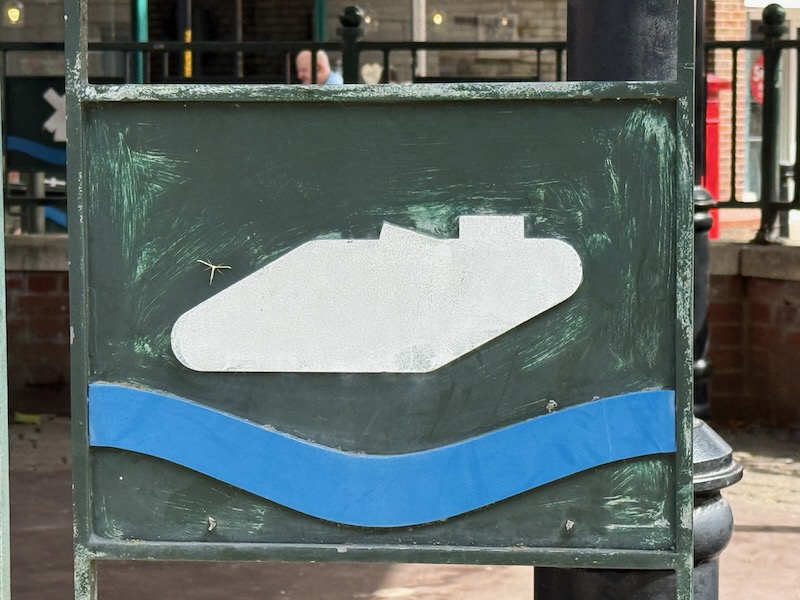
Our last stop was St Mary the Virgin Church. While there has been a church here since 1086 (one was mentioned in the Domesday Book), this building itself dates to the late 13th century. If you look at the 2 exterior pictures, you can see they look different. The first is of lighter stone while the 2nd is darker stone and has defensive crenellations. This indicates the building and extensions that occurred over several centuries.
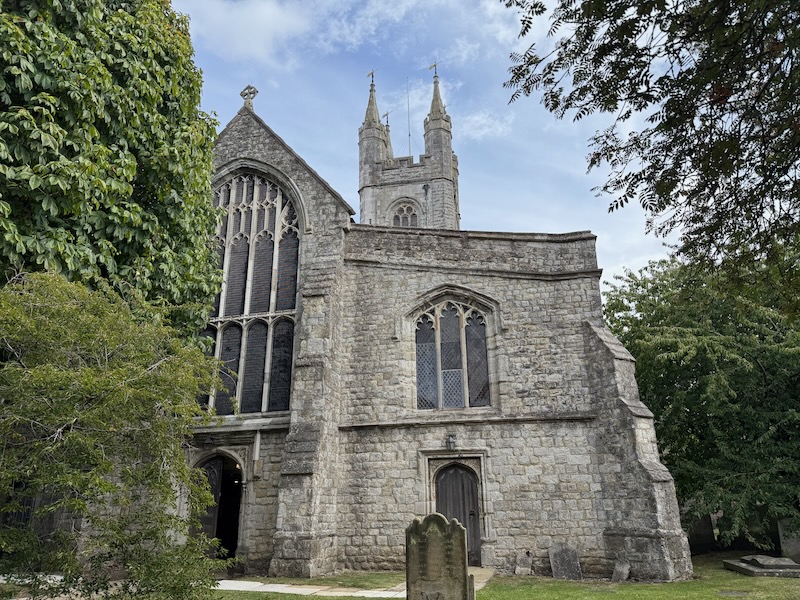
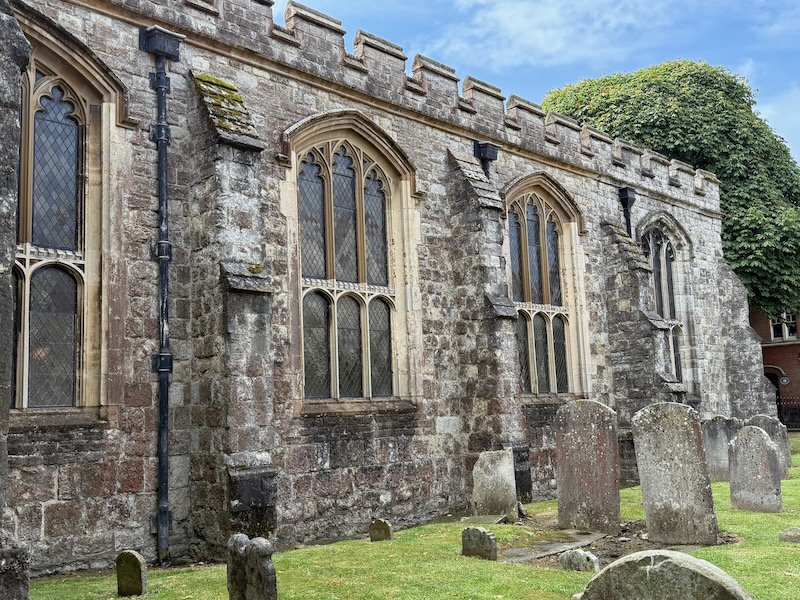
The interior looks very different than the exterior, being tall and light, with Gothic arches separating the nave from the side aisles that were added in the 1800's. The cream-colored ceiling is decorated in gold and has the date "1638". The pulpit dates from 1897 and is made of stone with marble columns, depicting Christ the Good Shepherd flanked by the four evangelists.
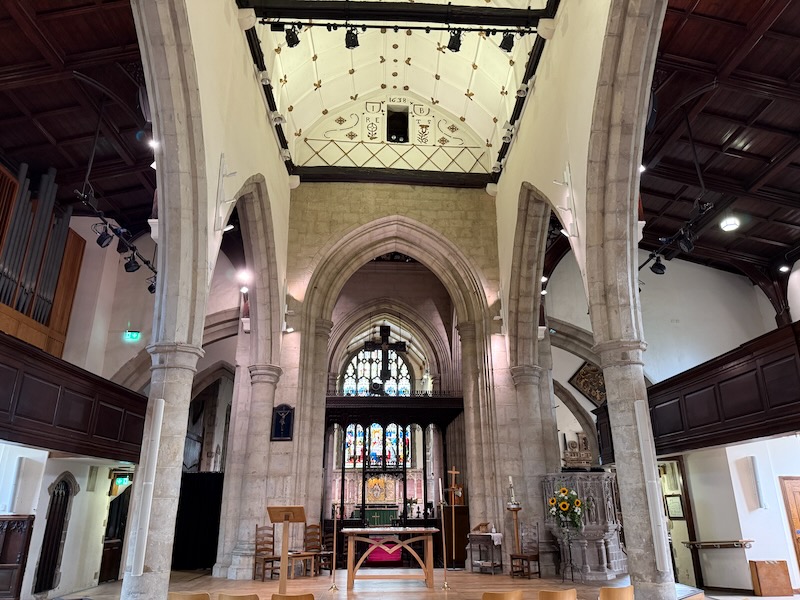

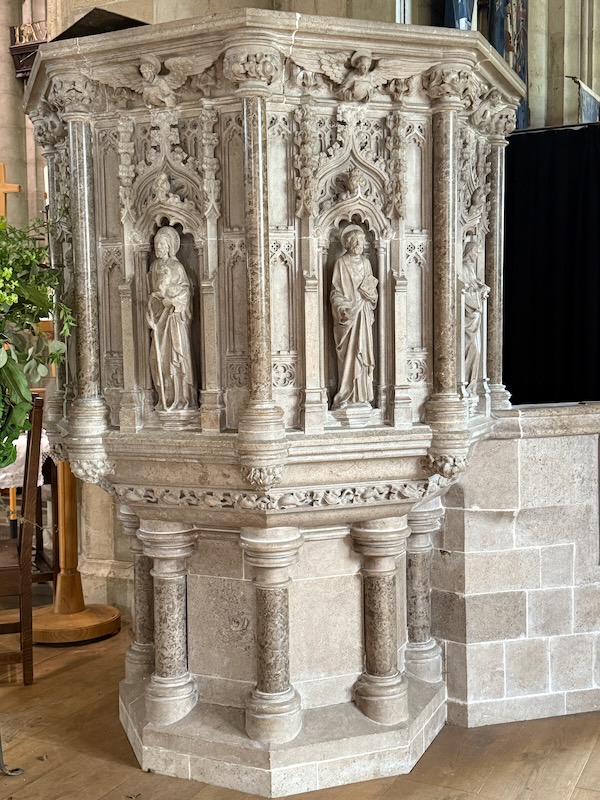
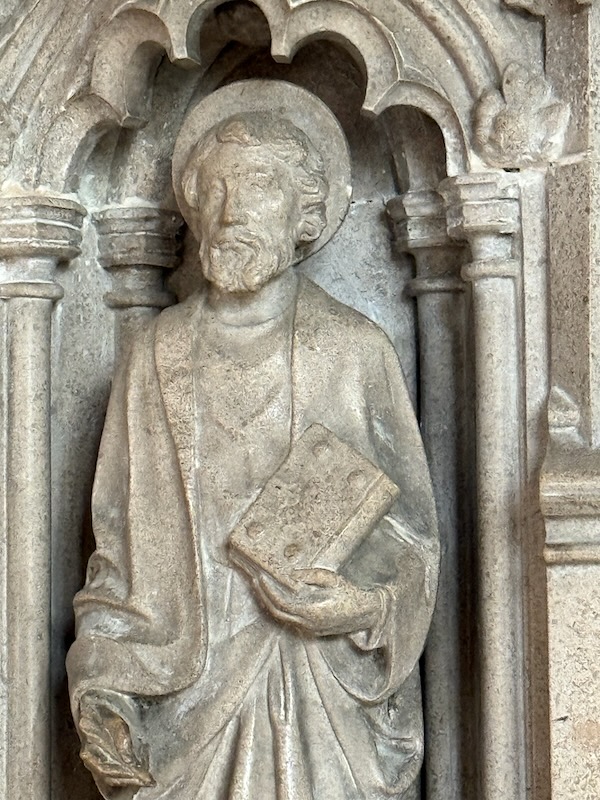
This is called the St. Francis Chapel, formerly known as the Smythe Chapel due to it containing several monuments for the Smythe family. There is some connection here with other things we saw on this trip. One of the monuments is Richard Smythe, who owned Leeds Castle for a time.
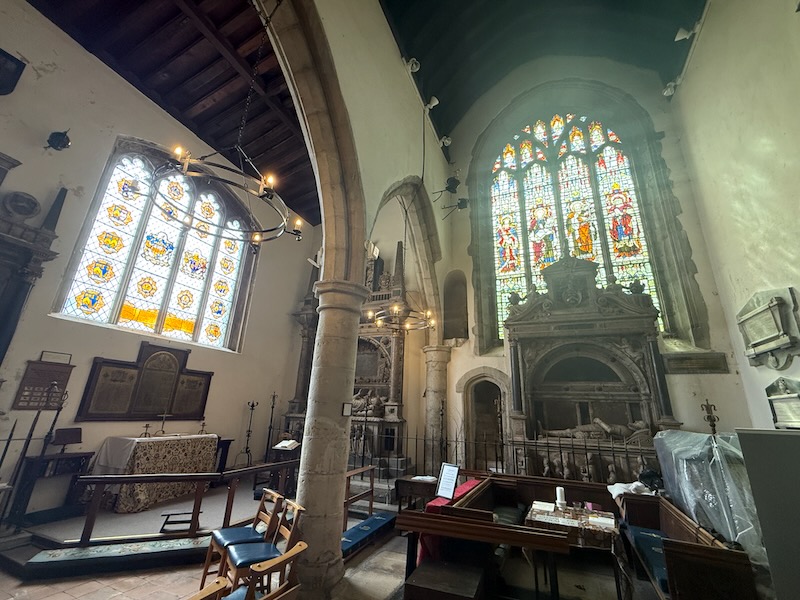
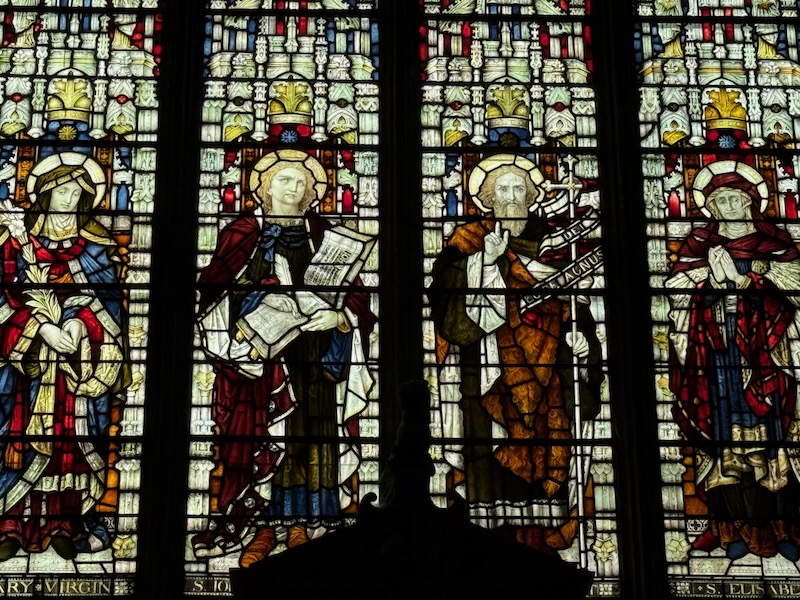
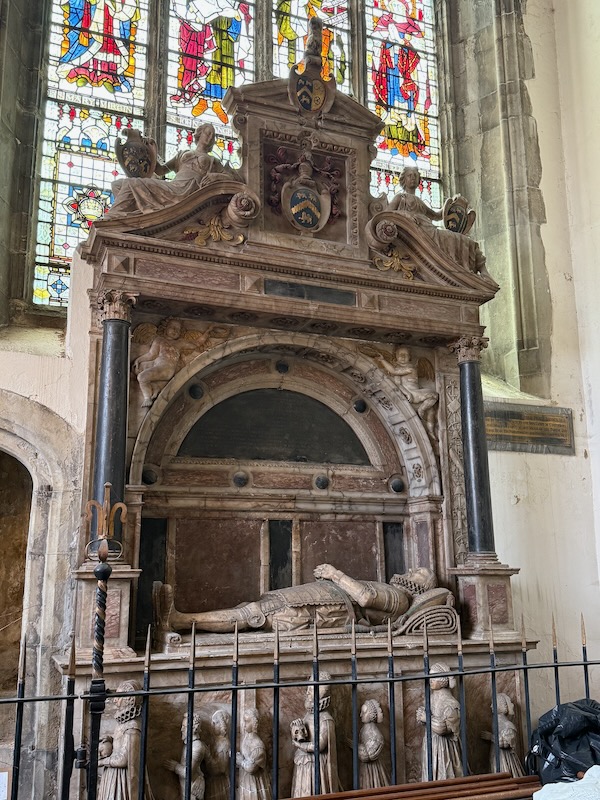
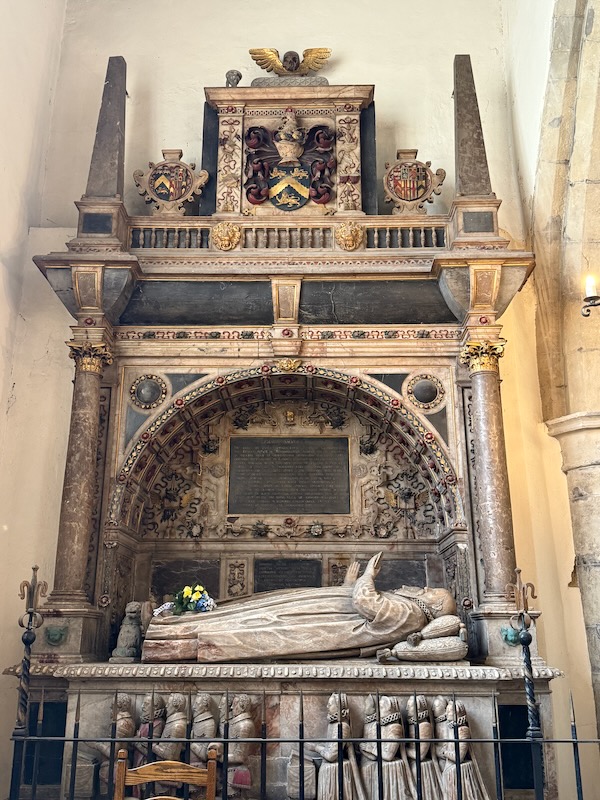
The choir stalls have poppyhead finials and some of them still have medieval misericords, mostly foliage but also a pelican and a pig eating acorns.
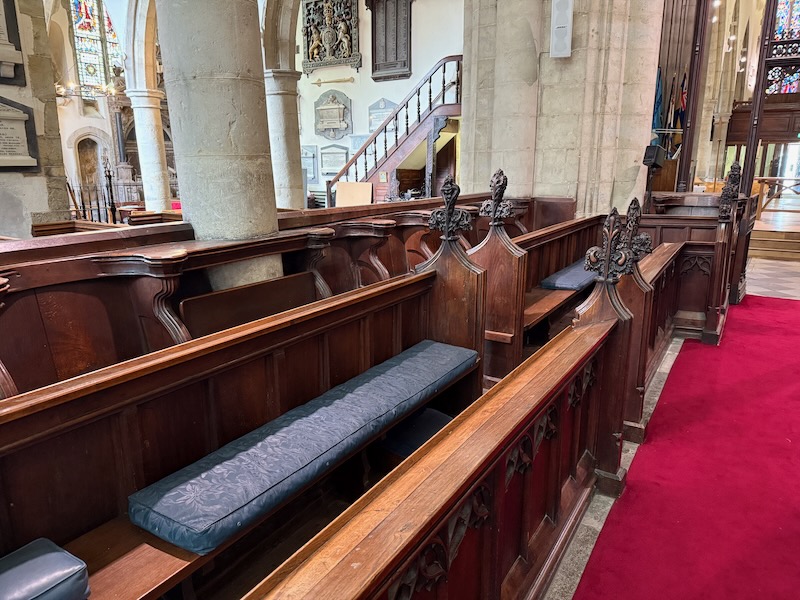
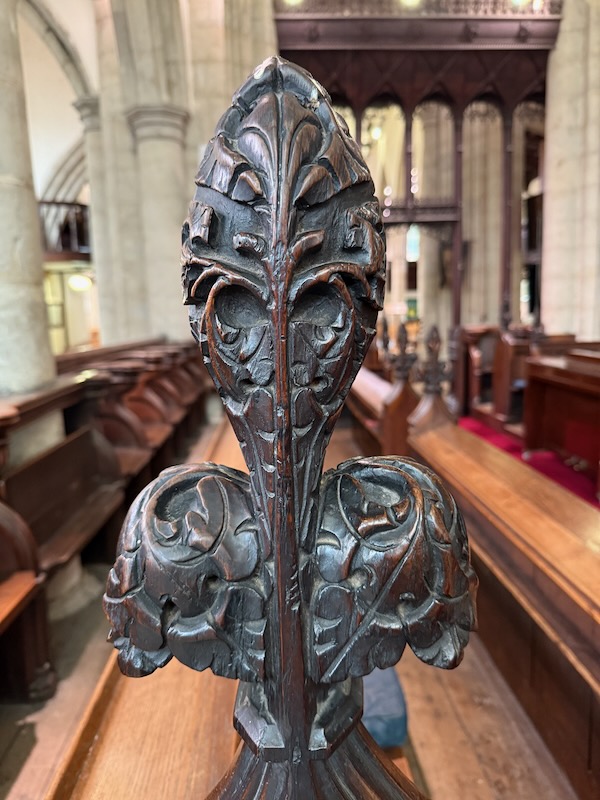
This is the main altar, with the stained-glass window including a depiction of the Last Supper.
